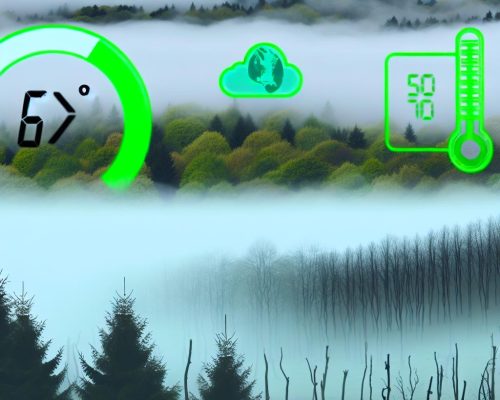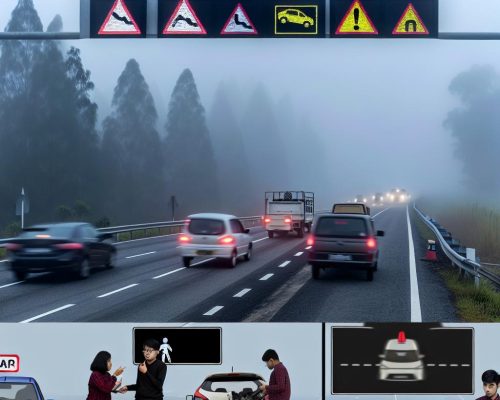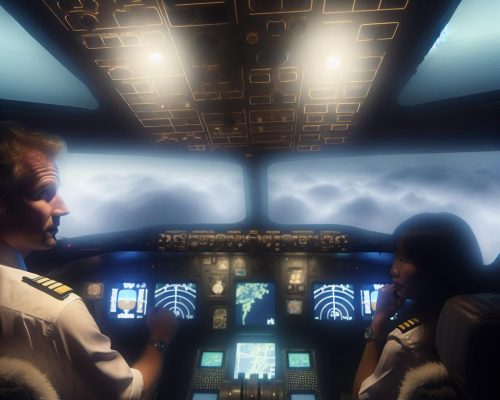
The Role of Fog in Marine Navigation
The Role of Fog in Marine Navigation
Fog has long been a critical concern for those involved in marine navigation, a challenge that dates back to the very inception of seafaring journeys. This atmospheric phenomenon can greatly hinder visibility, thereby increasing the risk to vessels navigating the open seas. To enhance safe practices, it is essential to understand the impact of fog and the strategies the maritime industry employs to manage and mitigate its adverse effects.
Understanding Fog and Its Formation
Fog is essentially a cloud that forms at ground level. It occurs when warm and moist air passes over a cooler surface. This process leads to the condensation of moisture into tiny water droplets suspended in the air. According to meteorological definitions, fog is recognized when these droplets reduce horizontal visibility to less than one kilometer. The most common forms of marine fog include radiation fog, which forms during calm, clear nights, and advection fog, which occurs when moist air passes over a cool ocean surface.
Radiation fog typically forms over land under clear skies and calm conditions. As the ground cools overnight, the moisture in the air near the surface condenses. Although this type of fog is mainly land-based, it can drift over to coastal waters. On the other hand, advection fog is predominantly seen over the ocean and is caused when warmer air moves over colder waters, resulting in the air cooling to its dew point and forming fog. Sea smoke or evaporation fog is another type that forms when cold air moves over warmer water, often observed in polar regions.
Challenges Posed by Fog
The most significant challenge fog imposes on marine navigation is reduced visibility. In such conditions, mariners find it increasingly difficult to maintain situational awareness. As visibility decreases, the risks of potential collisions with other vessels, fixed obstacles, or even the coastline increase significantly. The reduction of visual cues severely impedes the mariners’ ability to discern their environment, often leading to navigational errors. The lack of reference points, particularly when navigating in open waters, exacerbates these issues.
Navigating in fog requires heightened caution because it significantly reduces the margin for error. As such, fog is often responsible for increasing the complexity of marine navigation strategies and necessitating additional precautions to ensure the safety of vessels, their cargo, and crew.
Technological Aids
To counteract the challenges posed by fog, various technological advancements have been developed to support mariners in safely navigating through dense fog. Radar systems have become indispensable tools for maritime navigation. They operate by using radio waves to detect and identify the position and speed of objects. In foggy conditions, where visual perception is impaired, radar systems provide mariners with a substantially clearer picture of their surroundings.
Radar technology allows mariners to detect other vessels and potential obstacles, making it a vital part of the ship’s navigational equipment. The data from radar systems is often integrated with other navigational tools to offer comprehensive situational awareness, even in poor visibility conditions.
Global Positioning System (GPS)
Another essential component of modern marine navigation is the Global Positioning System (GPS). This satellite-based navigation system offers precise geographical data, ensuring that mariners can determine their exact position and track their movements accurately even when fog obscures visible landmarks. The integration of GPS technology with advanced marine charts and electronic navigation systems allows for the precise plotting of a vessel’s course relative to known hazards and shores.
GPS technology is a cornerstone of modern navigation systems, providing continuous, reliable positional data that enhances safety and efficiency in marine operations, particularly under challenging weather conditions like fog.
Fog Signals and Communication
In addition to technological tools, communication plays a pivotal role in mitigating the risks posed by fog. Vessels utilize sound signals such as horns, bells, and whistles to inform nearby ships of their location. These auditory signals are integral to preventing accidents, especially when visual signals are ineffective due to limited visibility. Furthermore, onboard communication systems enable vessels to exchange essential information, allowing coordination and the safe handling of vessel movements to avert potential collisions.
To ensure safety in fog, it is essential to adhere to established maritime communication protocols. Proper protocol not only reduces the risk of misunderstanding but also ensures that all vessels in a given area are aware of each other’s presence and movements.
Security in foggy conditions depends heavily on the effective interpersonal and inter-vessel communications, complemented by the use of standardized signaling techniques, ensuring that safety measures are consistently applied across different maritime zones.
Conclusion
Although fog continues to pose a significant threat to maritime navigation, the risks associated with this natural phenomenon are considerably mitigated by the fusion of technological advances and strategic communication practices. Through the use of radar systems, GPS technology, and sound signals, mariners are better equipped than ever before to navigate safely through foggy conditions. These tools, combined with best practices in communication and adherence to international maritime protocols, ensure that you can minimize risk while maximizing the safety and efficiency of global seafaring operations.
The capability to effectively manage and navigate through fog not only enhances operational reliability but also fosters the growth of global maritime activities, contributing to the flourishing of international trade and the security of seafarers across the world.






